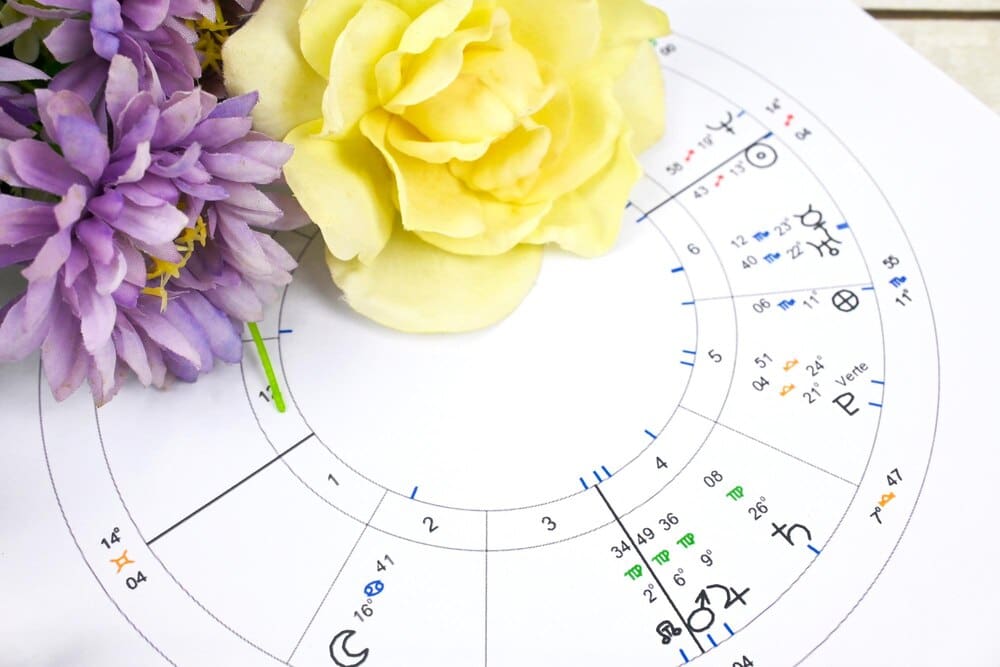In the intricate cosmic clockwork of Vedic Astrology, the Bhukti, or Antardasha, represents the critical sub-periods that bring precision and nuance to the sweeping timelines of a Mahadasha. For any individual navigating their life path, understanding Bhuktis is paramount because they pinpoint the specific planetary energy that will color a distinct phase within a larger life chapter, determining the timing of opportunities, challenges, and significant transformations. While the Mahadasha lord sets the overarching theme for several years, it is the Bhukti lord that acts as the on-the-ground manager, executing the agenda and revealing why a single major planetary period can contain such a rich variety of experiences, from triumphant peaks to challenging valleys.
The Architecture of Time: Mahadashas and Bhuktis Explained
Vedic Astrology’s most widely used predictive system is the Vimshottari Dasha, a 120-year cycle of planetary periods. Your life’s journey begins in the Mahadasha of the planet that rules the Nakshatra (lunar mansion) where your Moon was placed at the moment of your birth. This first Mahadasha is partial, and its remainder is calculated based on the Moon’s precise degree.
Think of a Mahadasha as a major chapter in the book of your life. A Venus Mahadasha, for example, will broadly theme a 20-year period with matters of love, relationships, luxury, comfort, and creativity. However, not every moment of those 20 years will feel the same. This is where the Bhukti comes in.
Each Mahadasha is subdivided into nine Bhuktis, each ruled by one of the nine planets in a specific, repeating order. The Bhukti acts as a sub-chapter, introducing a secondary planetary influence that modifies and directs the broader energy of the Mahadasha lord. It’s the interplay between the Mahadasha lord (the CEO) and the Bhukti lord (the department manager) that dictates the actual events and feelings you will experience.
How to Interpret a Bhukti
Analyzing a Bhukti is a multi-layered process that requires synthesizing several key factors. The quality of any given sub-period is not determined by the Bhukti lord alone, but by its complex relationship with the Mahadasha lord and its own standing within your unique birth chart.
The Relationship Between Mahadasha and Bhukti Lords
The single most important factor in judging a Bhukti is the natural relationship between the Mahadasha (MD) lord and the Bhukti (or Antardasha, AD) lord. In Vedic astrology, planets are considered natural friends, enemies, or neutrals to one another. This friendship matrix is the foundation of your interpretation.
When the MD and AD lords are great friends (e.g., Jupiter Mahadasha, Sun Bhukti), their energies cooperate harmoniously. The Bhukti lord will work diligently to deliver the positive results promised by the Mahadasha lord. These periods are often marked by ease, success, and the smooth manifestation of goals.
Conversely, when the MD and AD lords are bitter enemies (e.g., Sun Mahadasha, Saturn Bhukti), their energies clash. This creates a period of internal and external conflict, obstacles, and stress. The Bhukti lord actively works against the agenda of the Mahadasha lord, leading to frustrating delays and struggles where you may feel pulled in two opposing directions.
If the relationship is neutral, the results are more mixed and depend heavily on other factors, such as the planets’ placements in the birth chart.
The Bhukti Lord’s Natal Placement
After assessing the relationship, you must examine the condition of the Bhukti lord in your natal chart (Rasi chart). Where is this planet located and what is its condition? A well-placed Bhukti lord can salvage a difficult period, while a poorly-placed one can spoil even a promising combination.
Ask these questions:
- House Placement: Is the Bhukti lord in a favorable house, like a Kendra (1st, 4th, 7th, 10th) or a Trikona (1st, 5th, 9th)? Placement in these powerful houses empowers the planet to deliver positive results. If it’s in a challenging Dusthana house (6th, 8th, 12th), it may bring illness, obstacles, or losses related to its significations.
- Sign Placement (Dignity): Is the planet exalted (Ucha), in its own sign (Swakshetra), or in a friend’s sign? This gives it strength and dignity. If it is debilitated (Neecha) or in an enemy’s sign, it becomes weak and capable of producing negative outcomes.
- Aspects: Is the Bhukti lord receiving aspects from benefic planets like Jupiter or Venus, which can uplift it? Or is it being aspected by malefics like Saturn or Mars, which can add pressure and difficulty?
The Bhukti Lord’s Functional Nature
For each ascendant (Lagna), planets take on a role as either a functional benefic, a functional malefic, or a neutral. This is determined by the houses they rule. For example, Saturn is a natural malefic, but for Libra and Taurus ascendants, it rules powerful Kendra and Trikona houses, making it a Yogakaraka—the single most powerful and positive planet.
The Bhukti of a functional benefic, especially the Yogakaraka, can bring immense success, power, and recognition. In contrast, the Bhukti of a functional malefic, even if it’s a natural benefic like Jupiter for a Taurus ascendant (ruling the difficult 8th house), can bring unexpected challenges and turmoil.
Practical Examples of Bhukti Interpretations
Let’s consider two examples to see how these principles work in practice.
Scenario 1: Rahu Mahadasha – Jupiter Bhukti
Rahu’s 18-year Mahadasha is often a period of intense ambition, foreign influences, and unconventional pursuits. Jupiter, by contrast, represents wisdom, expansion, and orthodoxy. The two are not natural friends. Jupiter’s Bhukti, lasting 2 years and 4 months, will see the expansive, righteous energy of Jupiter trying to manage the chaotic, materialistic ambitions of Rahu.
If Jupiter is well-placed in the chart—say, exalted in the 9th house of fortune—this Bhukti can be a golden period. Jupiter’s wisdom will successfully channel Rahu’s ambition toward righteous and expansive growth, potentially bringing great wealth, higher knowledge, and spiritual progress. If, however, Jupiter is poorly placed in the 8th house, this same Bhukti could trigger scandals, financial losses, or a crisis of faith as Jupiter’s energy struggles to contain Rahu’s disruptive influence.
Scenario 2: Saturn Mahadasha – Venus Bhukti
Saturn’s 19-year Mahadasha is characterized by discipline, hard work, responsibility, and delays. Venus is the planet of love, pleasure, and diplomacy. Saturn and Venus are great friends, so their energies cooperate beautifully. Venus’s Bhukti, lasting 3 years and 2 months, is often a period of reward and relief within the long, arduous Saturn chapter.
This is often a time when the hard work of the previous Saturn Bhuktis pays off. It can bring marriage, the birth of children, financial gain, acquisition of vehicles and luxuries, and increased social enjoyment. The discipline of Saturn provides the foundation upon which the pleasures of Venus can be built and enjoyed in a stable, long-lasting way.
The Final Bhukti: Chidra Dasha
A special mention must be given to the final Bhukti of any Mahadasha. This is known as the Chidra Dasha, which translates to “a period of severance.” This is a highly transitional time, as the energy of the outgoing Mahadasha lord is waning and the influence of the upcoming Mahadasha lord is beginning to emerge.
These periods are often marked by confusion, endings, and the clearing of karmic baggage. It can manifest as health issues, changes in residence or career, relationship endings, or a general sense of disorientation. The purpose of the Chidra Dasha is to prepare you for the completely new chapter of life that the next Mahadasha will bring.
Beyond the Bhukti: Layers of Time
For even greater precision, Vedic astrology further subdivides the Bhukti. Each Bhukti is broken down into nine Pratyantardashas (or Antaras). Each Antara is then divided into nine Sookshma-dashas, which are further divided into nine Prana-dashas. This fractal-like division of time allows a skilled astrologer to drill down from a multi-year period to a specific month, week, or even day when an event is likely to occur.
For most practical life guidance, analyzing the Mahadasha-Bhukti-Antara level provides more than enough detail to understand the unfolding energies and make informed decisions.
Remedies for Challenging Bhuktis
When facing the Bhukti of a planet that is poorly placed or is an enemy to the Mahadasha lord, Vedic wisdom offers several remedial measures to help mitigate the negative effects and harmonize the energies.
- Mantras: Chanting the seed (bija) mantra of the Bhukti lord is a powerful way to attune your personal vibration to the planet’s higher frequency. For a challenging Saturn Bhukti, chanting “Om Sham Shanaishcharaya Namah” 108 times daily can instill discipline and patience.
- Charity (Daana): Donating items associated with the planet on its designated day of the week can appease its energy. For Mars, this could be donating red lentils on a Tuesday.
- Worship: Praying to the deity associated with the planet can provide spiritual support. Lord Ganesha is often worshipped to remove obstacles during any difficult period, while Hanuman is sought for courage during challenging Saturn or Mars periods.
- Lifestyle Changes: The most practical remedy is to consciously embody the highest qualities of the Bhukti lord. During a Mercury Bhukti, focus on clear communication and learning. During a Ketu Bhukti, embrace introspection and spiritual detachment.
Ultimately, the system of Mahadashas and Bhuktis reveals a dynamic and layered map of your life’s potential. It shows that our journey is not a monolithic experience but a rich tapestry woven from the threads of different planetary influences. By understanding the Bhukti, you move beyond a general forecast and gain access to the specific timing of your personal karma, empowering you to navigate life’s seasons with greater awareness, preparation, and wisdom.








